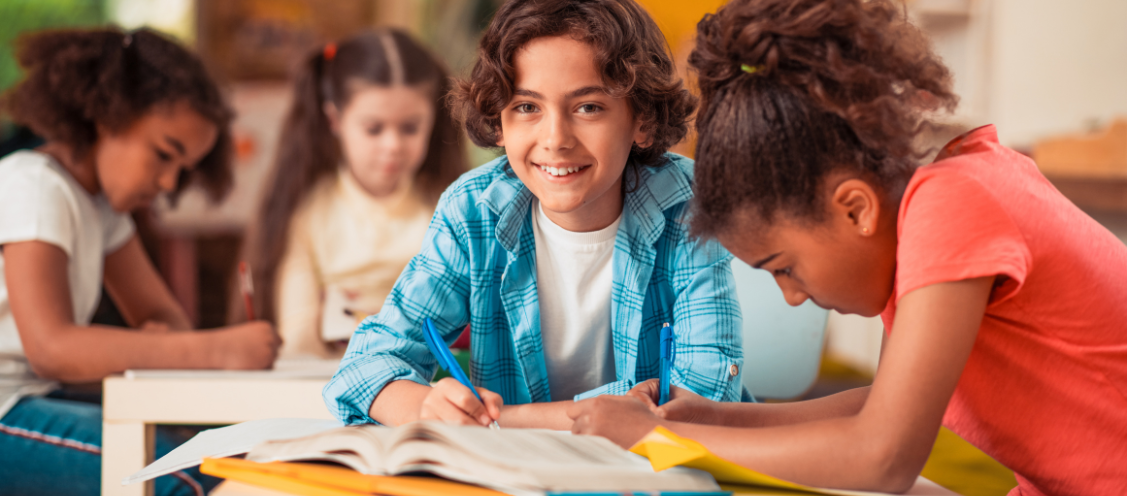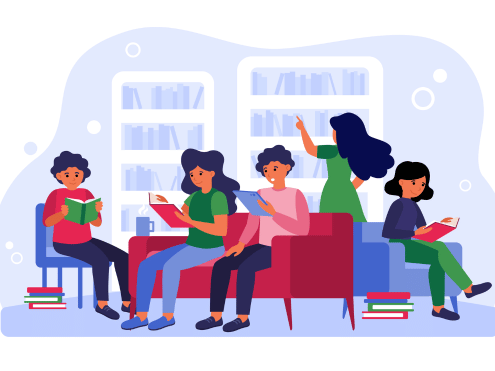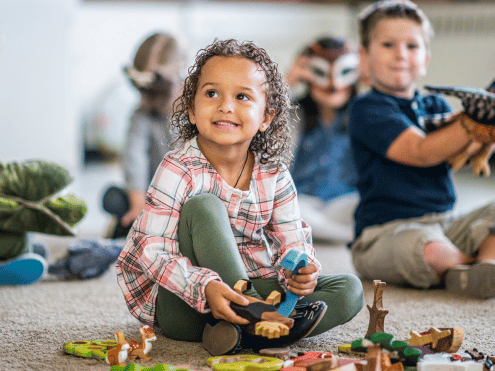As teachers, the coursebooks that we use dictate what we teach our learners and how we organise the content of our lessons throughout the school year. They serve as the backbone of our classes and are the tools that we rely on the most to ensure that the students’ learning is developing as it should. But do you ever take the time to look through the coursebook you’ve been given and really consider what it’s trying to achieve and the approach it’s taking? How is it different from coursebooks that you’ve used before? What skills are the learners going to be developing and how can the extra resources be used to further the learning?
When using a coursebook for Very Young Learners (VYLs), we need to be able to visualise the content in a classroom context and how the learners are going to interact with this content. So much learning at this age comes from movement and play, and the coursebook needs to act as a springboard for these types of activity which will develop the learners’ basic skills and, of course, put a SMILE on their faces!
Any material you use with Pre-primary learners has to build on their fundamental language skills, as well as other crucial areas of development needed by YLS. The SMILE approach which has been developed within the New Hooray, Let’s Play! series by ELT author and teacher trainer Herbert Puchta[1], is based on the principle that material at this level needs to stimulate children’s senses and interest.
In this blog post, we’ll look at what the approach involves, what it looks like in the coursebook and, of course, how to make the most of it in class.
What is the SMILE approach?
- S is for Skill-oriented Learning
When considering skills, we need to think beyond just the language skills YLS will be acquiring. In trying to understand a sentence, children use problem-solving skills that are useful in other areas of their learning. Therefore, by introducing a second language into the curriculum as early as possible, learners can develop both linguistic and general intellectual skills which are transferable to other areas of their lives.
What does this look like in a coursebook?
Coursebook activities at this level require learners to draw on their vocabulary knowledge, mainly in its spoken form. In New Hooray, Let’s Play!, you will also find a progression of reading and writing skills, especially at letter and sound level. Importantly, learners need to discover language through its use in context. Further development of skills is often included in activity books, so that the learners get plenty of practice through a variety of activity types.
- M is for Multi-sensory Learner Motivation
At this age, children develop different aspects of their learning through all of their senses. They are constantly observing what’s around them; touching things and listening to what people say and the noises of their daily lives. In the classroom, the different senses are integrated at the presentation stage to help the children better integrate the language. In short, the more the senses are involved, the more learners will store linguistic information in their long-term memory.
What does this look like in a coursebook?
VYL need a classroom environment which appeals to all of their senses. This is usually through bright and attractive coursebook pages and a wealth of extra material which encourages learners to look, listen and touch. In New Hooray, Let’s Play!, fine motor skills are practised by tracing around images, numbers and letters, completing matching tasks and placing stickers correctly onto the page. Digital resources are used to bring the material to life, making the coursebook content a real feast for the eyes. Teachers can use the physical material such as flashcards and story cards to make the language as interactive and accessible as possible.
- I is for Intelligence-building Activities
Intelligence is a complex characteristic that is very difficult to measure and is made up of many different elements. It can be argued that some people are genetically disposed to having higher level of intelligence in different areas, but many of the features we associate with intelligence are acquired in our formative years of learning. Language learning in the early years can stimulate a child’s intelligence and create an environment in which intelligence can flourish .
What does this look like in a coursebook?
Pre-primary learners need to repeat tasks in order to gain mastery of a skill as they grow up. Extra worksheets and photocopiable material all build intelligence in different ways and can be used by teachers for fast finishers as well as being set as homework. Coursebooks should present a variety of activities to really get the learners thinking and developing their basic skills. As well as this, teachers need to let students think independently and avoid too much prompting. New Hooray, Let’s Play! does both of these things.
- L is for Long-Term Memory Storage (through music, movement, rhythm and rhyme)
It’s no surprise that music, movement, rhythm and rhyme aid memory; just think about that song you can’t stop humming or those dance moves that you can still recall 20 years later. Songs and stories following this approach should incorporate strong rhythms and rhymes in order to support long-term memory storage. The activities combine perception and understanding, which is essential for remembering words, writing and recognising sentence patterns.
What does this look like in a coursebook?
Rhythm and rhyme are one of the most common elements found in a coursebook for VYLs. Tunes have to be catchy and ones which the learners (and teachers) will want to play over and over again. When this is coupled with movement, you have a winning combination and one which sticks in your mind. Some coursebooks come with short videos containing dance moves, whilst in others the teacher might have to get creative. One thing’s for sure, VYL love moving around the classroom to music and these elements of New Hooray, Let’s Play! make it a highly effective learning experience.
- E is for Exciting Stories and Games
Stories and games bring language to life; if children can identify with what they have learnt, they are much more likely to remember it. The more exciting and engaging the story or game, the more memorable it becomes. Through an interest in the characters and the stories they tell, children learn by association of the language included and are much more motivated to use it independently.
What does this look like in a coursebook?
Coursebooks need to contain friendly characters to help students engage with the language so that they’re excited about the content. Interactive material should be used alongside the coursebook to motivate learners and help them discover language in a dynamic way. New Hooray, Let’s Play! also comes with character puppets which can be used by teachers to tell stories and interact with students in a way that they find fun and exciting.
How can I make the most of the SMILE approach?
The aim of the SMILE approach is to support the students in their learning and development of skills, but what can teachers do in class to really make sure it’s as effective as possible?
Here are our top tips on how to make the SMILE approach work for you:
- Digital resources: Utilise the digital resources that accompany New Hooray, Let’s Play!. Remember, your classroom has to be a place in which students feel immersed in the language. Digital resources help bring the language to life and engage students in a way that can make it truly magical.
- Interactive games: These are very useful if you have an IWB or projector in your classroom and the kids love being able to physically interact with the content. Make sure you give learners a chance to play with the language as much as possible.
- Language presentation: Ensure that any language input (grammar and vocabulary) is introduced little by little and in an easy-to-follow way for the students. Always present language in context.
- Flashcards: Use the flashcards that come with New Hooray, Let’s Play! as much as you can. Get your learners to use all of their senses to work with the language in different ways. Don’t be afraid to get them out of their chairs and moving around the classroom.
- Extra worksheets: Use the extra material for fast finishers and for recycling language from previous lessons. Develop learners’ skills on certain language points in sufficient depth so that it really sticks.
- Dance routines: Make the most of the songs in New Hooray, Let’s Play! and the opportunity to work with movement in class. If there is no set dance routine to a particular song, then make one up and use it with your learners. Just make sure you remember the routine for the next lesson!
So, what are you waiting for? Put a SMILE on your students’ faces today.










